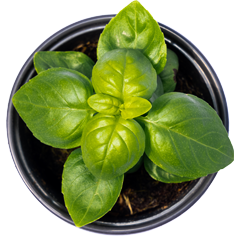In recent years, sustainability has become an increasingly important consideration in landscape design. At Country Farms, Inc., we strive to create beautiful and functional landscapes that not only meet the needs of our clients but also prioritize environmental responsibility.
Sustainable landscape design encompasses a wide variety of practices that promote environmental health, conserve resources, and create low-maintenance ecosystems. These strategies can range from the selection of native plants and water-efficient irrigation systems to the use of permeable paving and recycled materials.
In addition to its environmental benefits, sustainable landscape design is also an excellent way to enhance the beauty and appeal of your property. By embracing eco-friendly practices, you can create an outdoor space that is visually stunning and harmonious with the surrounding natural environment, promoting biodiversity and health for the local ecosystem.
Whether you are looking to incorporate sustainable practices into a new landscape design or improve the environmental footprint of your existing outdoor space, our team at Country Farms, Inc. is here to help. With our expertise in sustainable design principles and commitment to client satisfaction, we are dedicated to creating outdoor spaces that perfectly balance style, function, and environmental responsibility.
Key Components of Sustainable Landscape Design
1. Soil Health and Conservation
Healthy, nutrient-rich soil serves as the foundation for a thriving and sustainable landscape. Maintaining and enhancing soil health is crucial to support plant growth, reduce the need for chemical fertilizers, and conserve water. Practices such as composting, cover cropping, and mulching can all contribute to soil health and help prevent erosion.
2. Plant Selection and Biodiversity
Selecting the right plants for your landscape promotes biodiversity and creates a resilient outdoor ecosystem. Opt for native plants that are well-adapted to local soil and weather conditions, as they often require less water, fertilizer, and maintenance than non-native species. Incorporate a diversity of plants, including trees, shrubs, and flowers, to provide food and shelter for beneficial insects, birds, and other local wildlife.
3. Efficient Water Use and Irrigation
Water conservation is a significant aspect of sustainable landscape design. Implementing efficient irrigation systems, such as drip irrigation or smart technology controllers, can ensure that your landscape receives the right amount of water without waste. Additionally, incorporating rainwater harvesting techniques or drought-tolerant plants can further reduce your landscape’s water demand.
4. Environmentally Friendly Hardscape Materials and Techniques
Selecting eco-friendly and sustainable materials for your hardscape design can increase its overall environmental benefits. Consider permeable paving options that allow rainwater to soak into the ground and reduce runoff. Utilize recycled or locally sourced materials whenever possible to minimize the environmental impact and carbon footprint of your landscape project.
Implementing Sustainable Practices in Your Landscape Design
1. Group Plants by Water Needs
Design your landscape with water-efficient irrigation in mind by grouping plants with similar water requirements together. This “hydrozoning” strategy ensures that each plant receives the appropriate amount of water without over- or under-watering, further reducing water waste and supporting plant health.
2. Employ Natural Pest and Disease Control
Utilizing ecologically sound pest management strategies can help you maintain a healthy and thriving landscape while reducing the need for chemical pesticides. Encourage beneficial insects by planting a variety of native, pest-resistant, and flowering plants. If pests do become an issue, address the problem with environmentally-friendly alternatives to harmful chemicals.
3. Focus on Low-Maintenance and Drought-Resistant Plantings
Selecting low-maintenance and drought-tolerant plants allows for an attractive landscape that requires minimal water and care. Succulents, ornamental grasses, and native perennials are a few examples of plants that can thrive in various conditions with little intervention.
4. Embrace Sustainable Lawn Care Practices
For many homeowners, a lush green lawn is a quintessential component of their landscape. However, lawns can require significant water, fertilizer, and maintenance to maintain their appearance. By adopting eco-friendly lawn care practices, such as mowing with a mulching mower, applying organic fertilizers, and using drought-tolerant grass species, you can enjoy a beautiful lawn without sacrificing sustainability.
5. Create Habitat for Local Wildlife
A truly sustainable landscape fosters biodiversity and supports the local ecosystem. Incorporating plants, water features, and shelter options that support native species will encourage a diverse range of wildlife to find a home in your outdoor space. By creating a haven for pollinators, birds, and other beneficial creatures, you can enhance your landscape’s ecological value and contribute to the overall health of the environment.
Final Thoughtts
Embracing sustainable landscape design enables homeowners to create outdoor spaces that are beautiful and ecologically responsible. By prioritizing soil health, appropriate plant selection, efficient water use, eco-friendly hardscape materials, and sustainable lawn care practices, a harmonious outdoor space that benefits the environment and your lifestyle can come to fruition.
Ready to transform your outdoor space into a sustainable oasis? Contact us at Country Farms today to learn more about our sustainable landscaping services and how we can create an eco-friendly and visually stunning environment that suits your needs.

